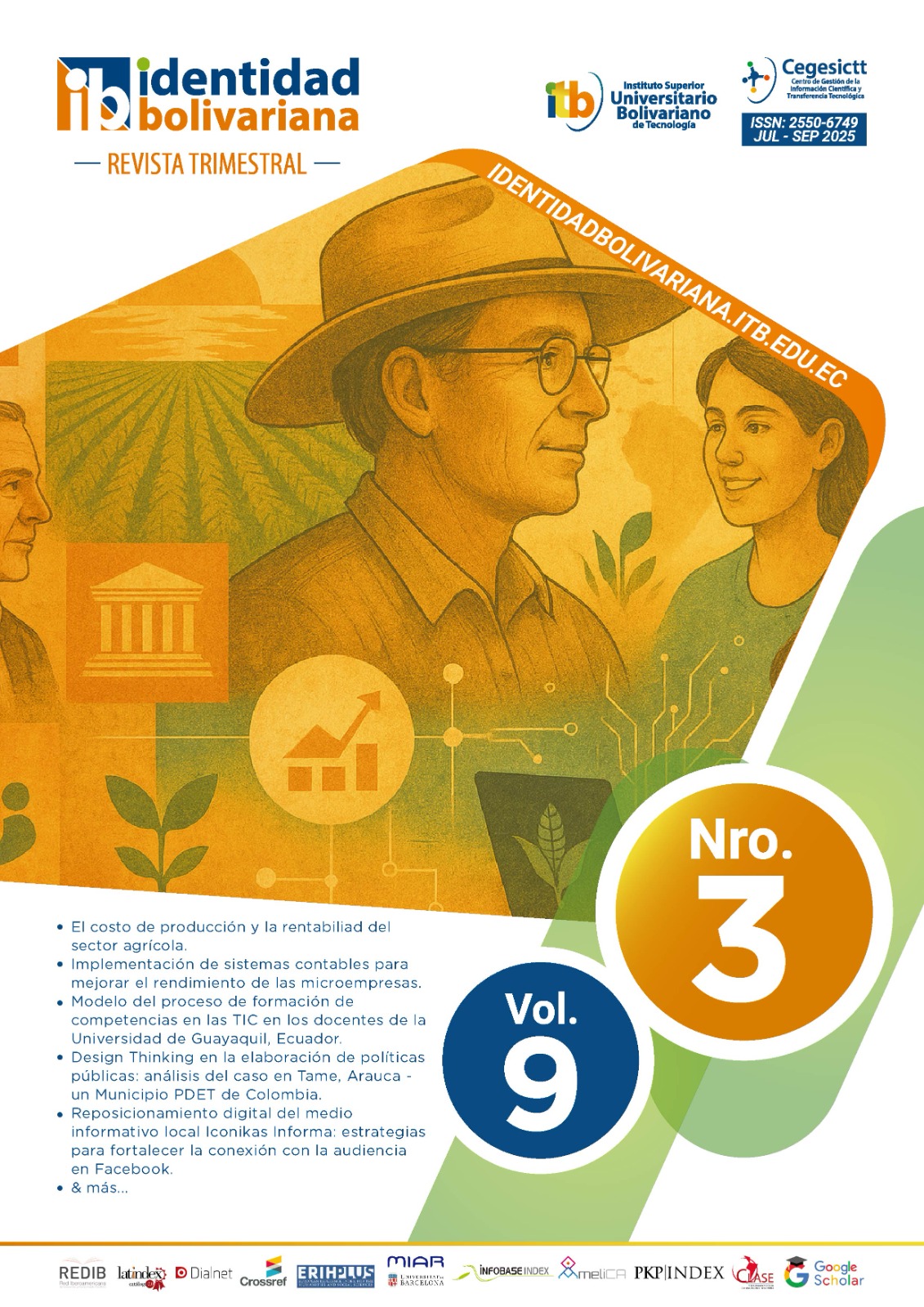Model of the ICT competence formation process for professors at the University of Guayaquil, Ecuador
Main Article Content
Abstract
The effective integration of Information and Communication Technologies (ICT) in higher education represents a crucial challenge. This research aimed to gather reliable and valid data to develop a training model in digital competencies for undergraduate teachers at the University of Guayaquil., to improve educational quality and prepare future professionals for a highly digitized work environment. A mixed methodology combining quantitative and qualitative techniques was employed, including surveys, interviews, focus groups, observations, and document analysis. The results revealed significant gaps in teachers’ digital competencies, especially in areas such as digital content creation and security, as well as a lack of institutional policies and guidelines focused on this topic. However, a positive attitude towards the integration of ICT in teaching was evident among teachers. In conclusion, the need to implement a training model adapted to the context of the University of Guayaquil is highlighted, addressing the identified deficiencies and promoting the development of teachers’ digital competencies in a comprehensive and cross-cutting manner.
Article Details
Section
How to Cite
References
Cabero, J., & Llorente, M. C. (2020). Habilidades digitales docentes para la confianza digital: una experiencia de innovación con realidad aumentada en la formación del profesorado. Revista Interuniversitaria de Investigación en Tecnología Educativa, 9, 34-48. https://doi.org/10.6018/riite.438921
Cabero, J., & Martínez, A. (2019). Las tecnologías de la información y comunicación y la formación inicial de los docentes: modelos y competencias digitales. Profesorado, Revista de Currículum y Formación del Profesorado, 23(3), 247-268. https://doi.org/10.30827/profesorado.v23i3.9421
Cabero, J., & Valencia, R. (2019). TIC para la inclusión: una mirada desde el enfoque de las competencias digitales docentes. Aula Abierta, 48(2), 139-146. https://doi.org/10.17811/rifie.48.2.2019.139-146
Esteve, F. (2015). La competencia digital docente: análisis de la autopercepción y evaluación del desempeño de los estudiantes universitarios de educación por medio de un entorno 3D [Tesis doctoral, Universitat Rovira i Virgili].https://www.tdx.cat/handle/10803/291441
Gutiérrez, I. (2014). Alfabetización digital: una formación estratégica para el docente del siglo XXI. Revista de Investigación Educativa, 32(2), 423-436. https://doi.org/10.6018/rie.32.2.190881
Hernández, R. M., Orrego, R., & Quiñones, S. (2016). Nuevas formas de aprender: La formación docente frente a las TIC. Propósitos y Representaciones, 4(2), 451-491.
Jang, S. J., & Tsai, M. F. (2012). Exploring the TPACK of Taiwanese elementary mathematics and science teachers with respect to use of interactive whiteboards. Computers & Education, 59(2), 327-338. https://doi.org/10.1016/j.compedu.2012.02.003
Mishra, P., & Koehler, M. J. (2006). Technological Pedagogical Content Knowledge: A framework for teacher knowledge. Teachers College Record, 108(6), 1017-1054. https://doi.org/10.1111/j.1467-9620.2006.00684.x
Organización de las Naciones Unidas para la Educación, la Ciencia y la Cultura. (2019). Las TIC en la educación. https://es.unesco.org/themes/tic-educacion
Prensky, M. (2001). Digital natives, digital immigrants part 1. On the Horizon, 9(5), 1-6. https://doi.org/10.1108/10748120110424816
Puentedura, R. R. (2006). Transformation, technology and education [Presentación de diapositivas]. http://hippasus.com/resources/tte/
Unión Europea. (2017). Marco Europeo para la Competencia Digital del Profesorado (DigCompEdu). https://ec.europa.eu/jrc/en/digcompedu
UNESCO. (2019). Marco de Competencias de los Docentes en Materia de TIC. https://unesdoc.unesco.org/ark:/48223/pf0000371024

